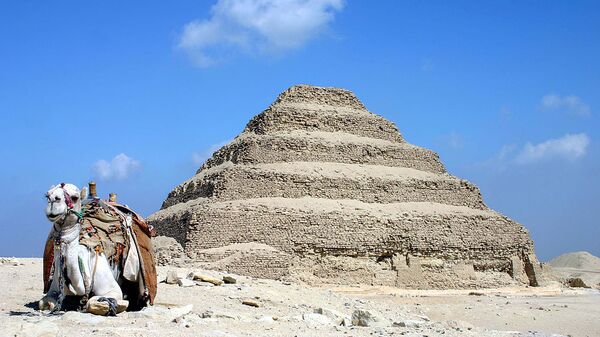An Egypt archaeologist uncovered a “labyrinth of underground tunnels” near one of the most famous pyramid sites, in what a historian has dubbed a “sensational” find during a documentary.
In her recent Channel 5 series “Egypt’s Great Treasures” historian Bettany Hughes revealed how an entire new city was found to be concealed beneath the sand in the city of Saqarra, famously known for its Pyramid of Djoser, also known as the Step Pyramid.
“There’s one particular tomb here that’s hiding something really extraordinary, which, for me, beats the bizarreness of everything else. When it first came to light 150 years ago, it was a sensational find,” said the historian.
In the middle of the 19th century, the French archaeologist Auguste Mariette came across an intriguing clue: a sphinx buried in the sand. As they started digging, the team unearthed over 100 sphinxes lined up, all leading to a certain spot.
Dr Hughes narrated how Mariette spent months clearing the path, packing the sphinxes off to Paris and, on 12 November 1851 finally reached the mysterious subterranean entrance the sphinxes had led him to.
Hidden inside they found a huge tomb. Hughes explained why it was central to ancient Egyptians, saying:
“This is a palace for the dead.”
The coffins discovered in the labyrinth were huge, made of solid granite.
Desperate to find out what was hidden inside, the team used dynamite to open up one enormous coffin. Imagine their amazement at finally discovering the contents: a massive mummified bull.
“They realised that the ancient Egyptians had built these huge coffins and this entire site has an underground cemetery for enormous, prized bulls," said Hughes.
Egypt’s Saqarra is the site of the so-called Step Pyramid that dates back to the 27th century BC and is considered to be the earliest known example of what this ancient civilisation eventually became known for.




